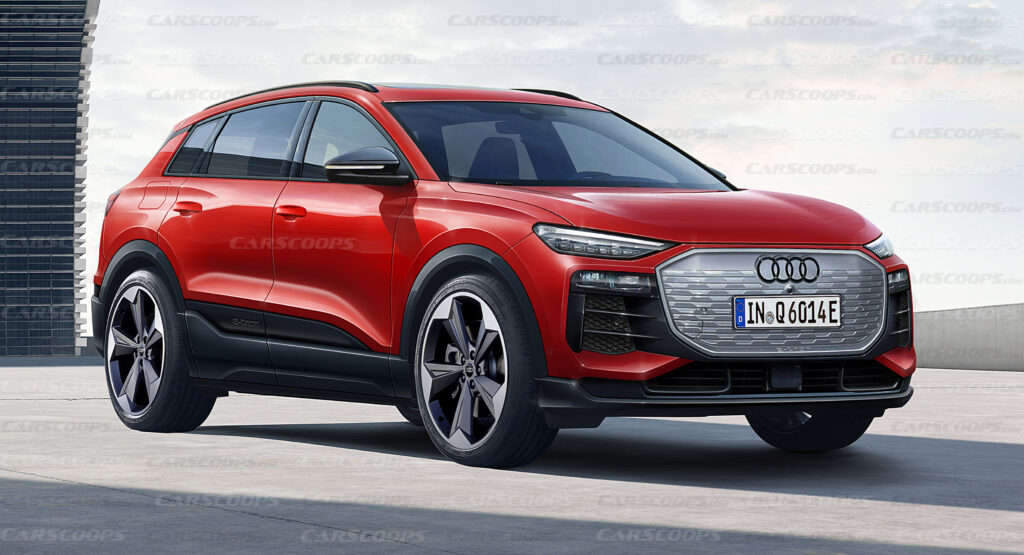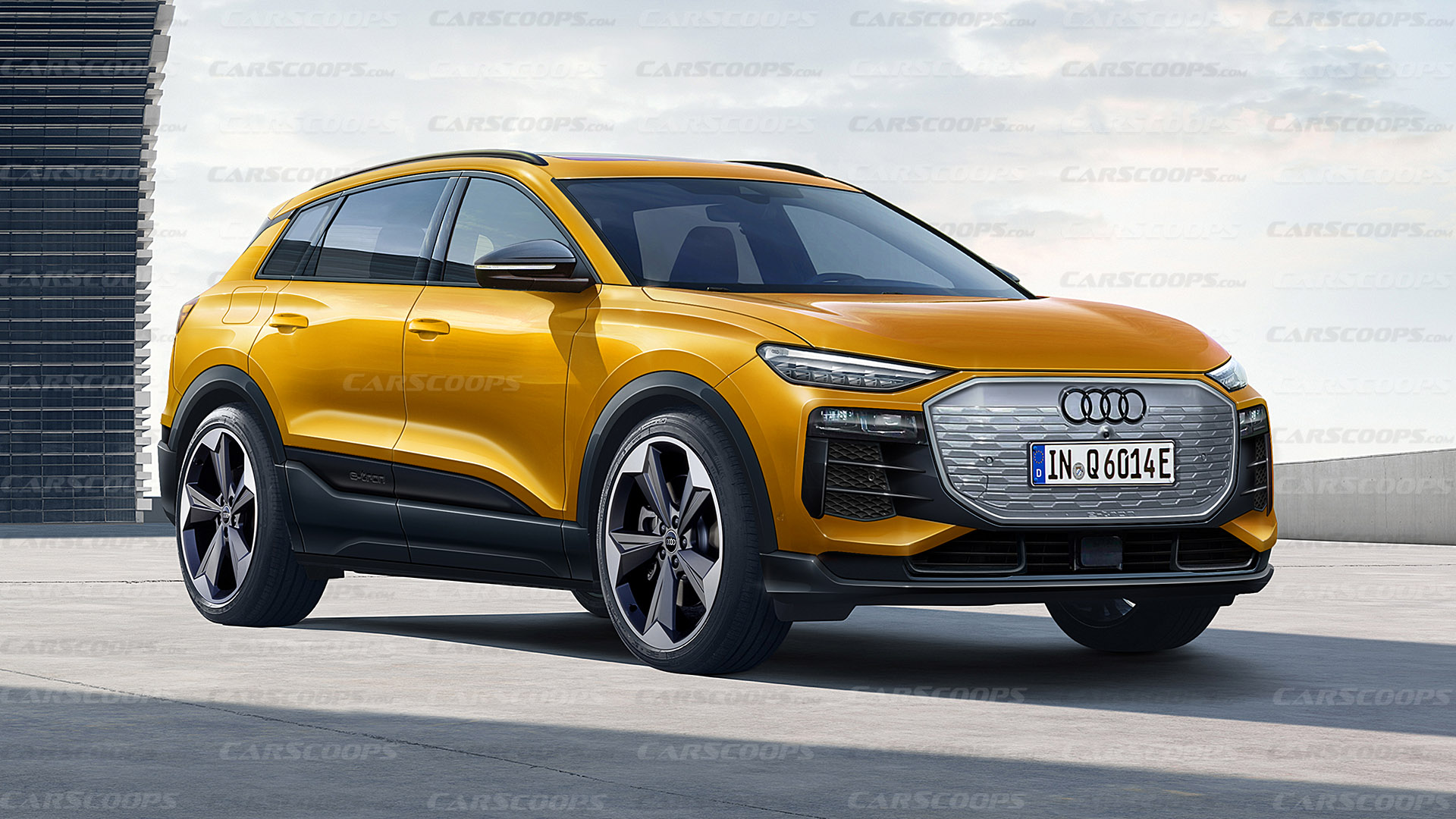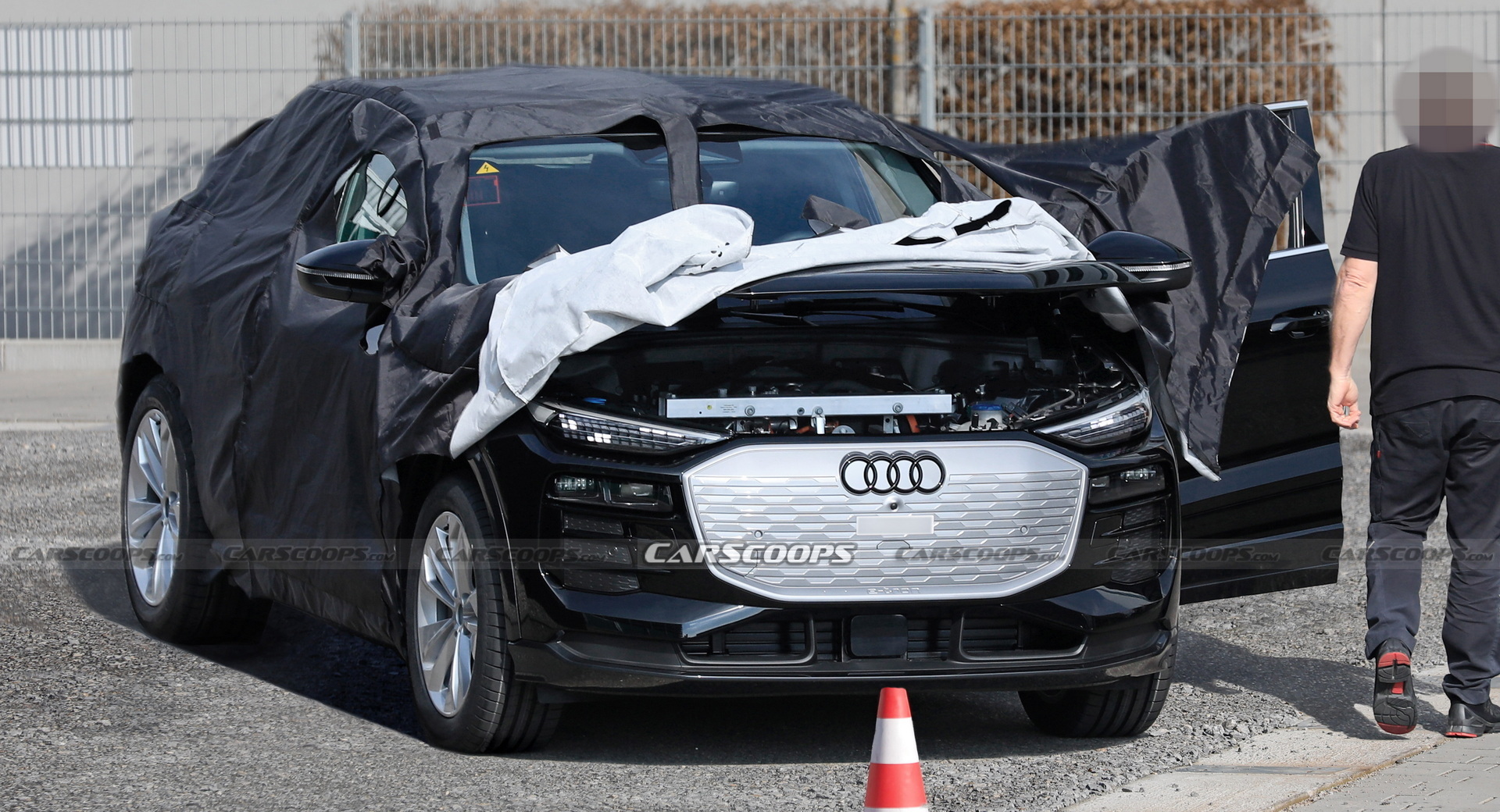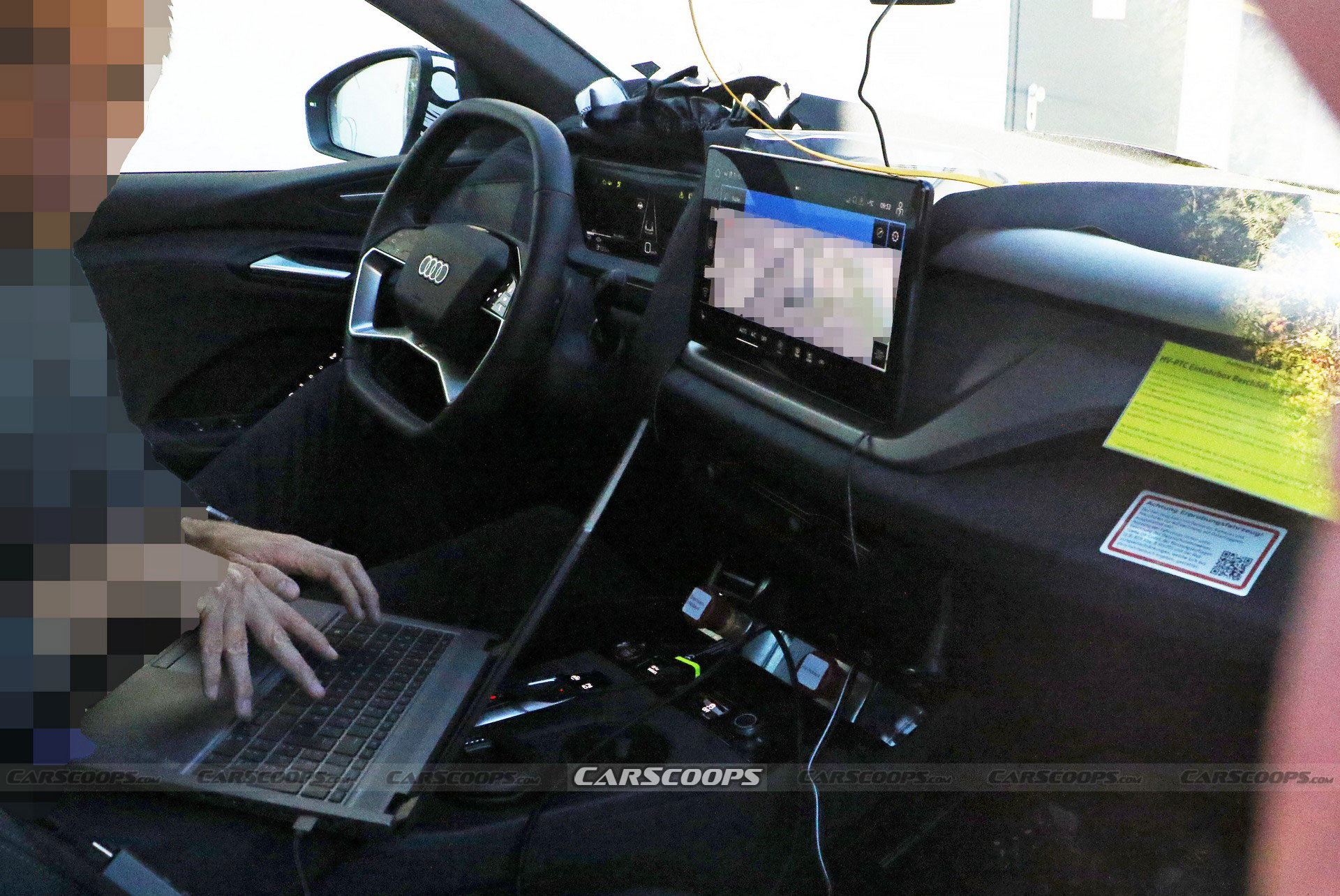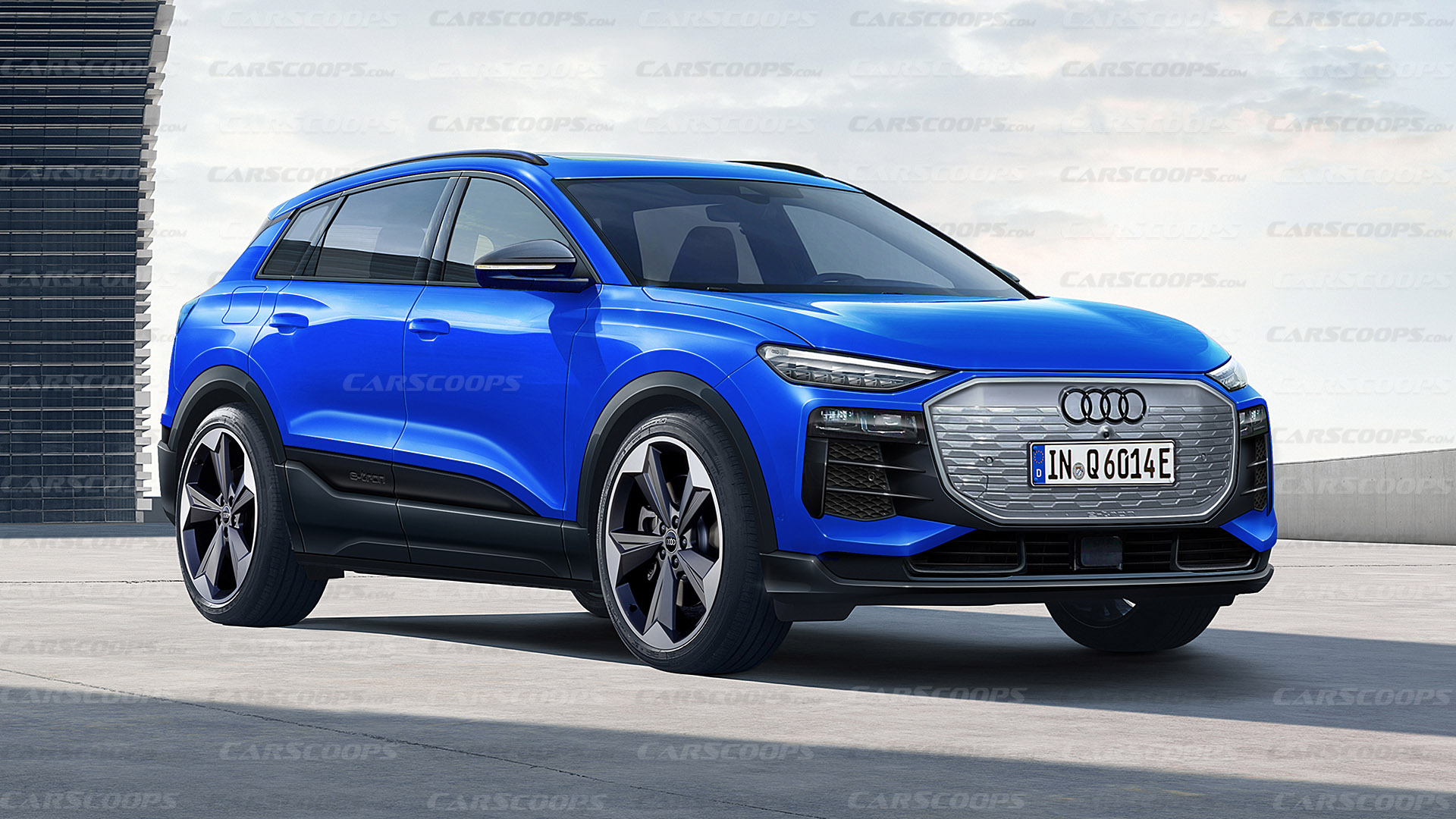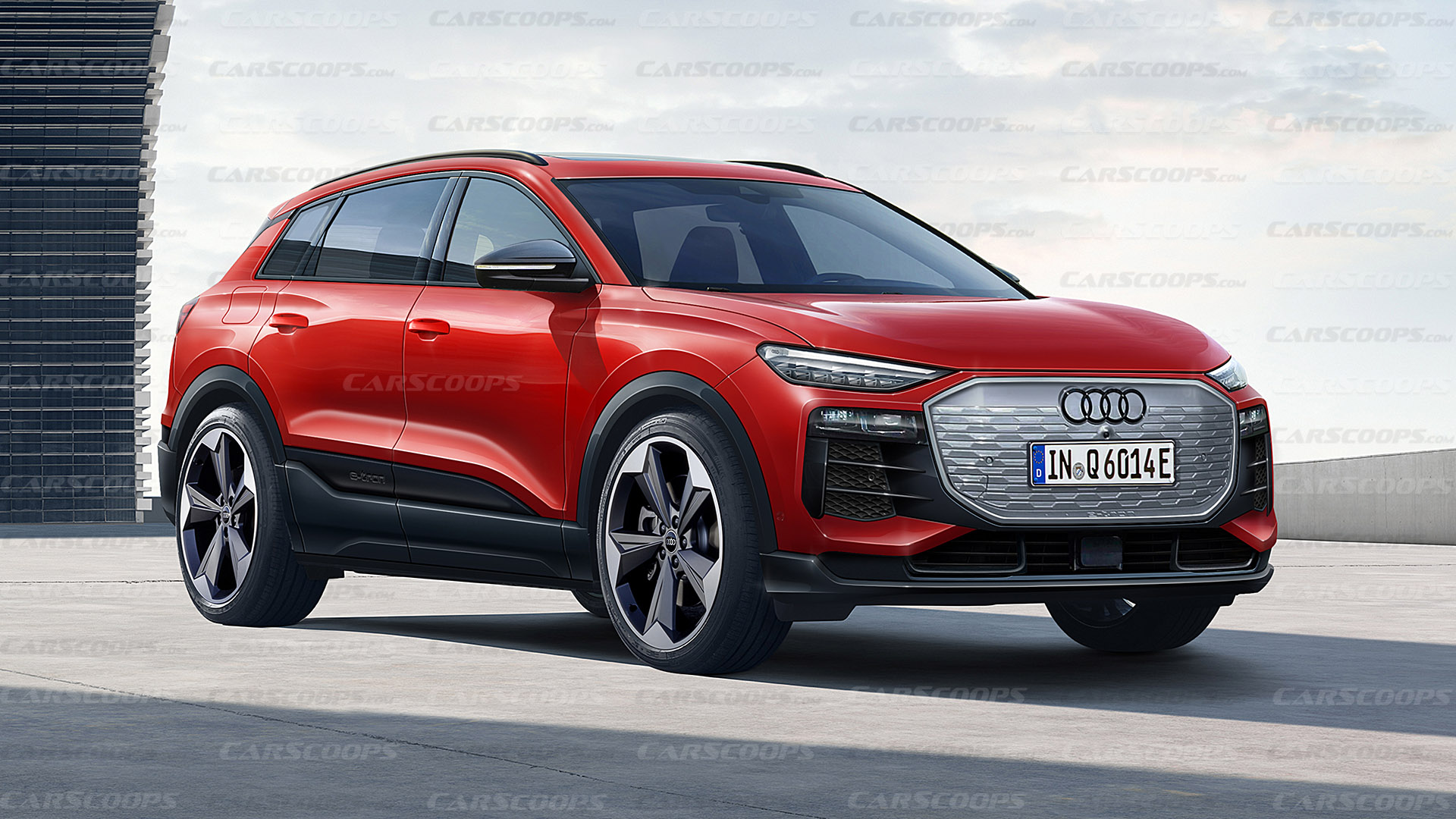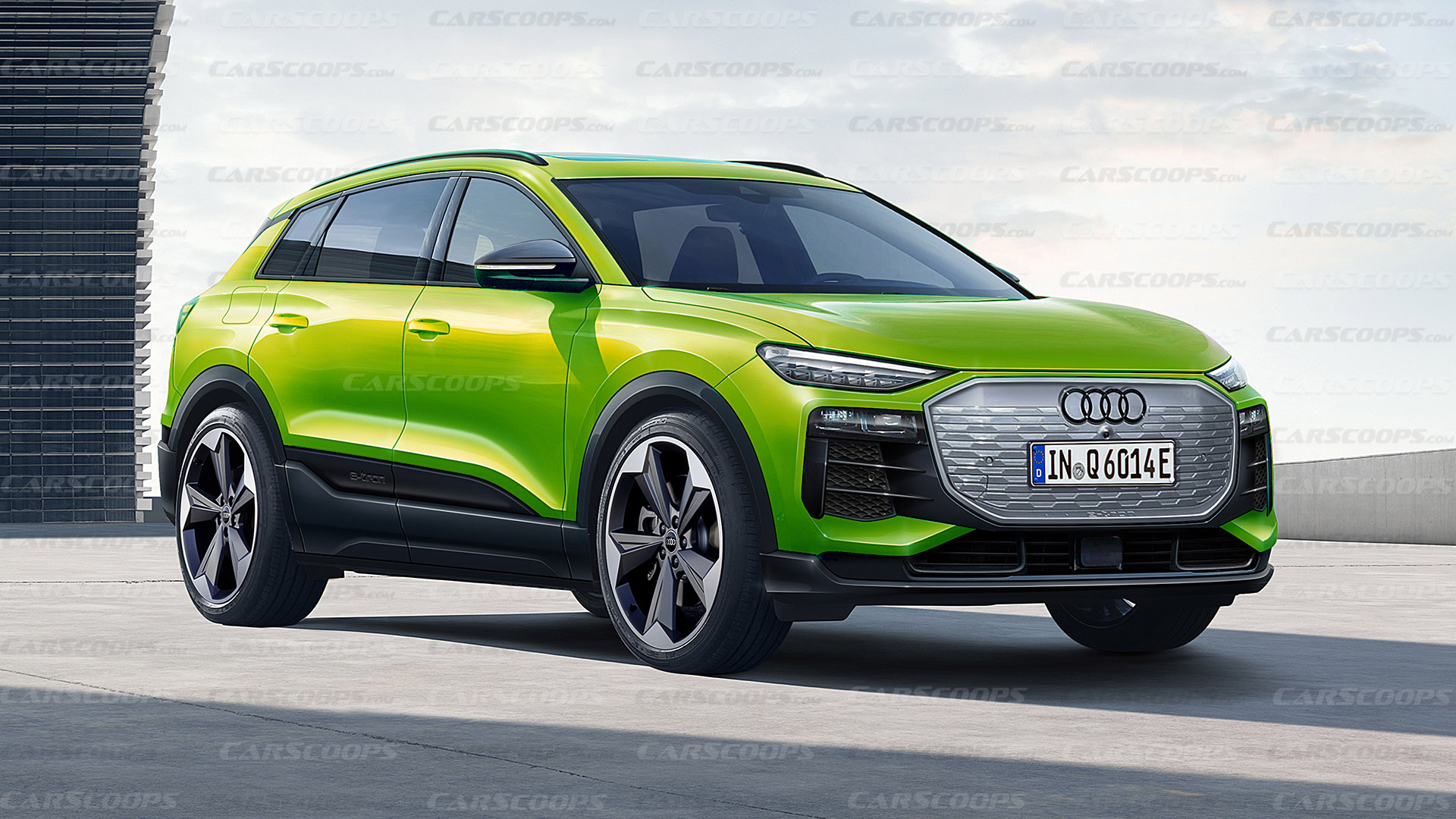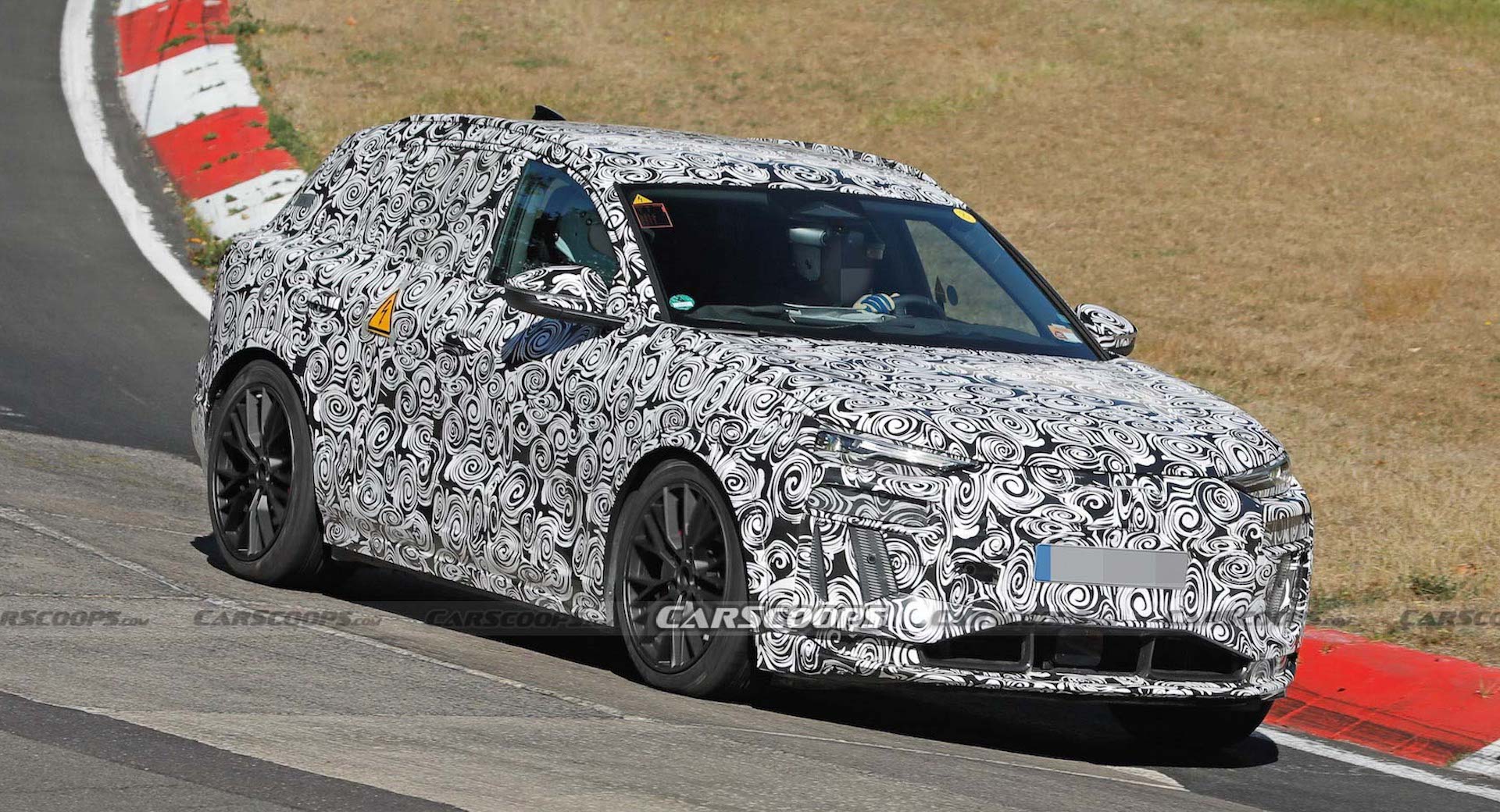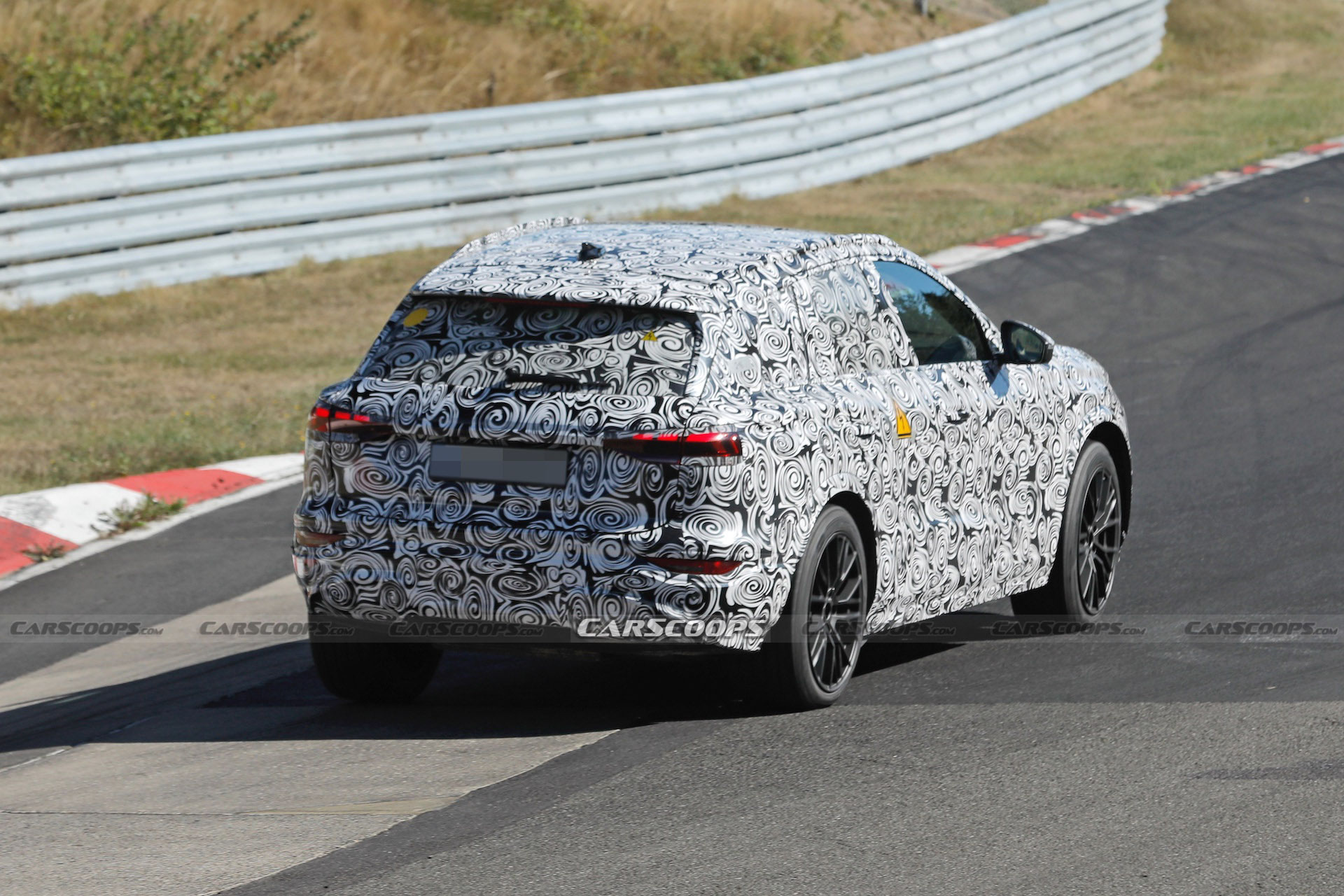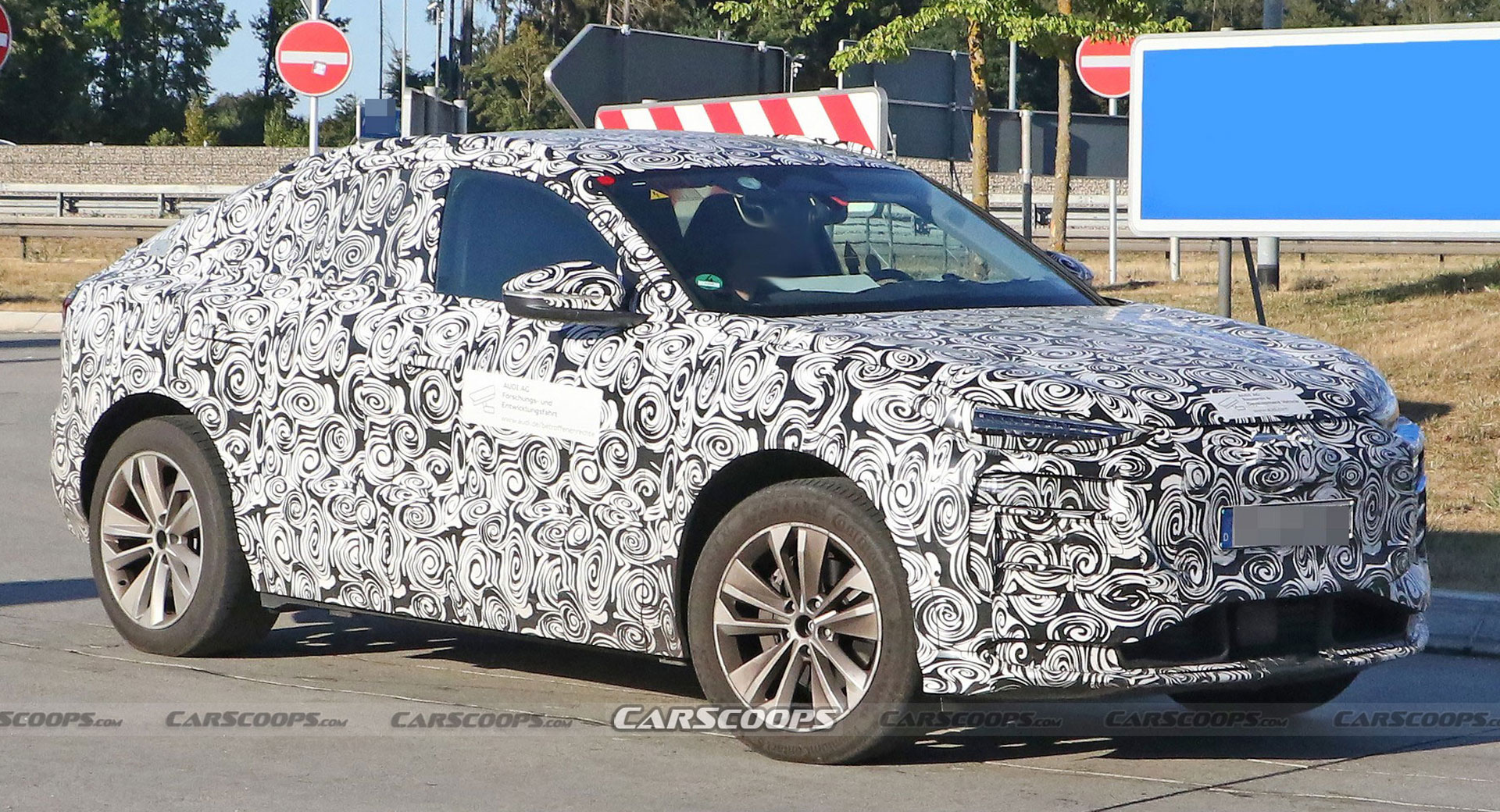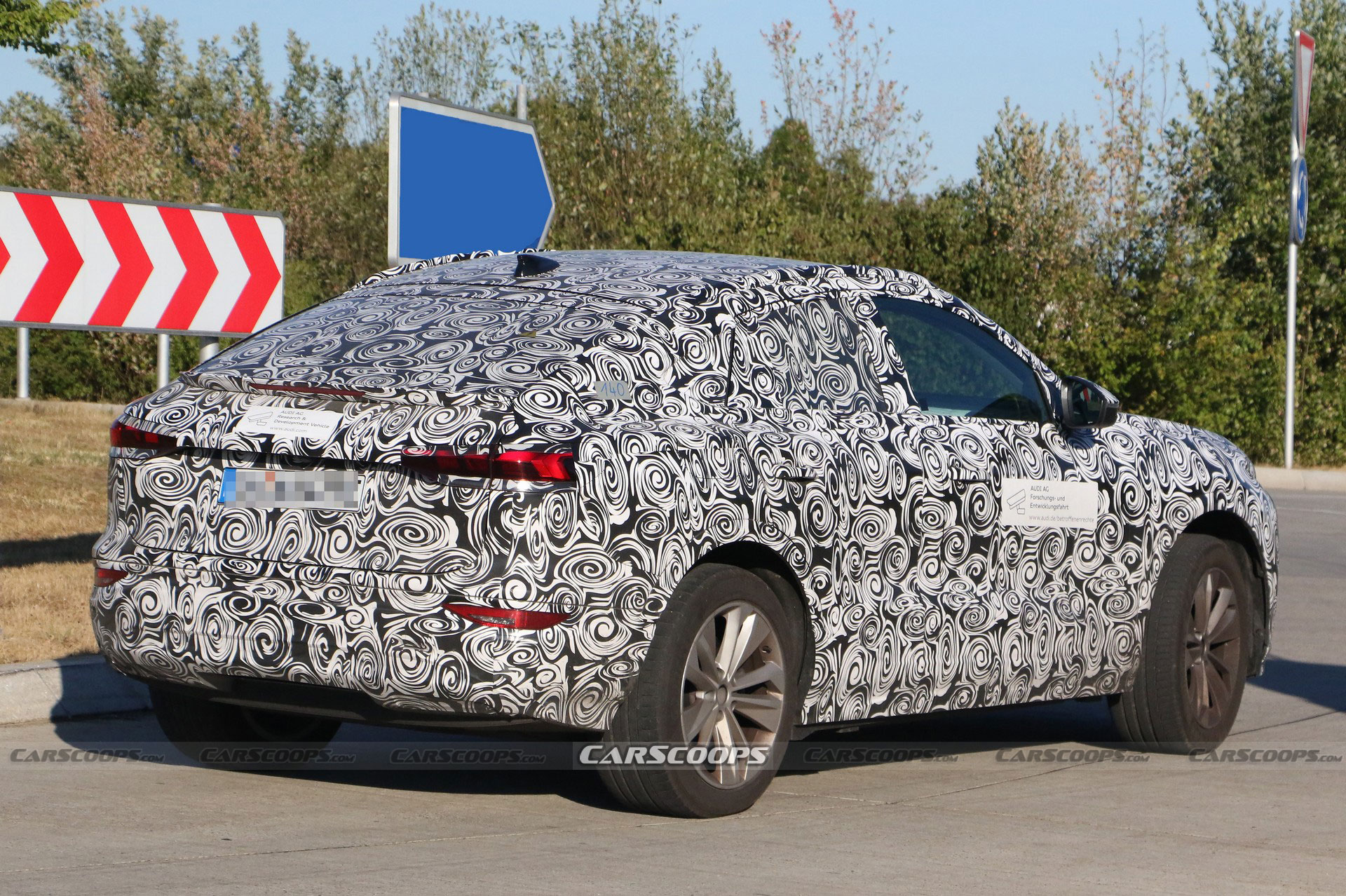This story contains independent illustrations created by Jean Francois Hubert/SB-Medien for CarScoops. They are neither related to nor endorsed by Audi.
One of the most anticipated future Audi models is the fully electric Q6 e-tron. Unrelated to the ICE-powered Audi Q6 that is already available in China, the Q6 e-tron will be a sporty and premium SUV that shares its underpinnings with the upcoming Porsche Macan EV featuring the latest advancements in terms of technology and driving dynamics.
Besides the numerous shots of camouflaged prototypes we have seen over the past couple of years, our spy photographers have caught Audi’s next SUV with an undisguised front end leaving little to the imagination. Using this as a base, our illustrator created a new rendering of the Q6 e-tron, accurately depicting how the production model will look like.
Read: Audi Could Merge The A5 Sportback And The A4 Sedan In A Single Model
The Q6 e-tron will feature split headlights at the front, similar to the A6 e-tron sedan. The upper units will sport matrix LED graphics for a high-tech look, at least in some trims. Similarly to the smaller Q4 e-tron, the grille will be covered and painted in silver, but the bumper intakes will still be functional.
From the profile, the Q6 e-tron will look more dynamic than your average SUV thanks to the sculpted body lines and sporty proportions. The tail will be typical of the German brand with aggressive-looking horizontally mounted LED taillights. Besides the traditional SUV bodystyle, Audi will also launch the Q6 e-tron Sportback coupe-SUV with a sloping roofline and an integrated spoiler. As with most Audi models these days, a high performance-focused RS variant with an even sportier bodykit will join the range at a later date.
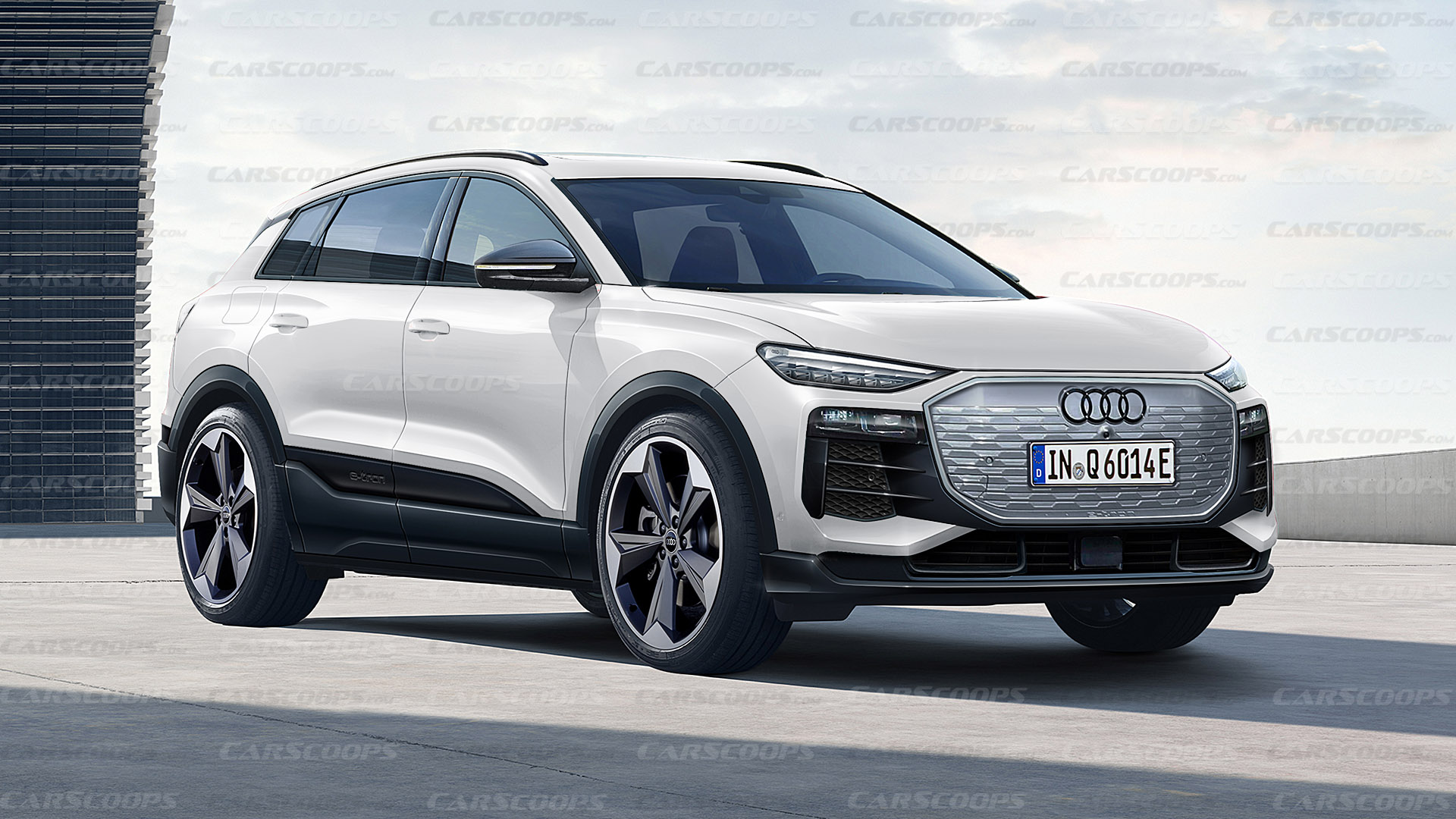
The new Q6 will have a minimalist center console largely devoid of switchgear and a freestanding tablet-style screen for the infotainment system
Inside, spy shots have revealed a different layout to the current Audi range. The dashboard is dominated by a large portrait-orientation infotainment touchscreen combined with a digital instrument cluster. The multifunctional flat-bottom four-spoke steering wheel features Audi’s new and simpler emblem, while the center console has fewer buttons than ever before.
Underpinnings Developed By Audi And Porsche
Unlike the more mainstream Q4 e-tron which is based on the VW Group’s MEB architecture and the larger Q8 e-tron flagship that sits on an updated version of the aging MLB Evo, the Q6 e-tron will ride on the more sophisticated Premium Platform Electric (PPE). Those same underpinnings will be shared with the upcoming Audi A6 e-tron and the Porsche Macan EV. The PPE is compatible with single (RWD) or dual electric motors (AWD), and a battery with a capacity of up to 100 kWh.
Audi is keeping its cards close to its chest in terms of the available power outputs. However, it has been confirmed that the Porsche Macan EV will produce up to 603 hp (450 kW / 611 PS) and 1,000 Nm (738 lb-ft) of torque from dual electric motors. Audi could use the same setup for the performance flagship of the Q6 e-tron range bearing the RS badge, in combination with a sporty chassis setup.
Lesser variants could be offered with the dual electric motors from the A6 e-tron concept which produced a more sensible 470 hp (350 kW / 476 PS) and 590 lb-ft (800 Nm) of torque. As for the range, the A6 e-tron sedan was said to be able to travel up to 435 miles (700 km) in concept form. A more limited range is a safer bet for the less aerodynamic SUV, placing it closer to rivals including the Mercedes-Benz EQE SUV and the BMW iX.
The Audi Q6 e-tron was initially expected to arrive before the end of 2022. However, its premiere could be pushed back, though hopefully, it will debut before the mechanically-related Porsche Macan EV which has been delayed for 2024. Starting in 2026, Audi will only unveil fully electric models before becoming an EV-only brand in 2033.




